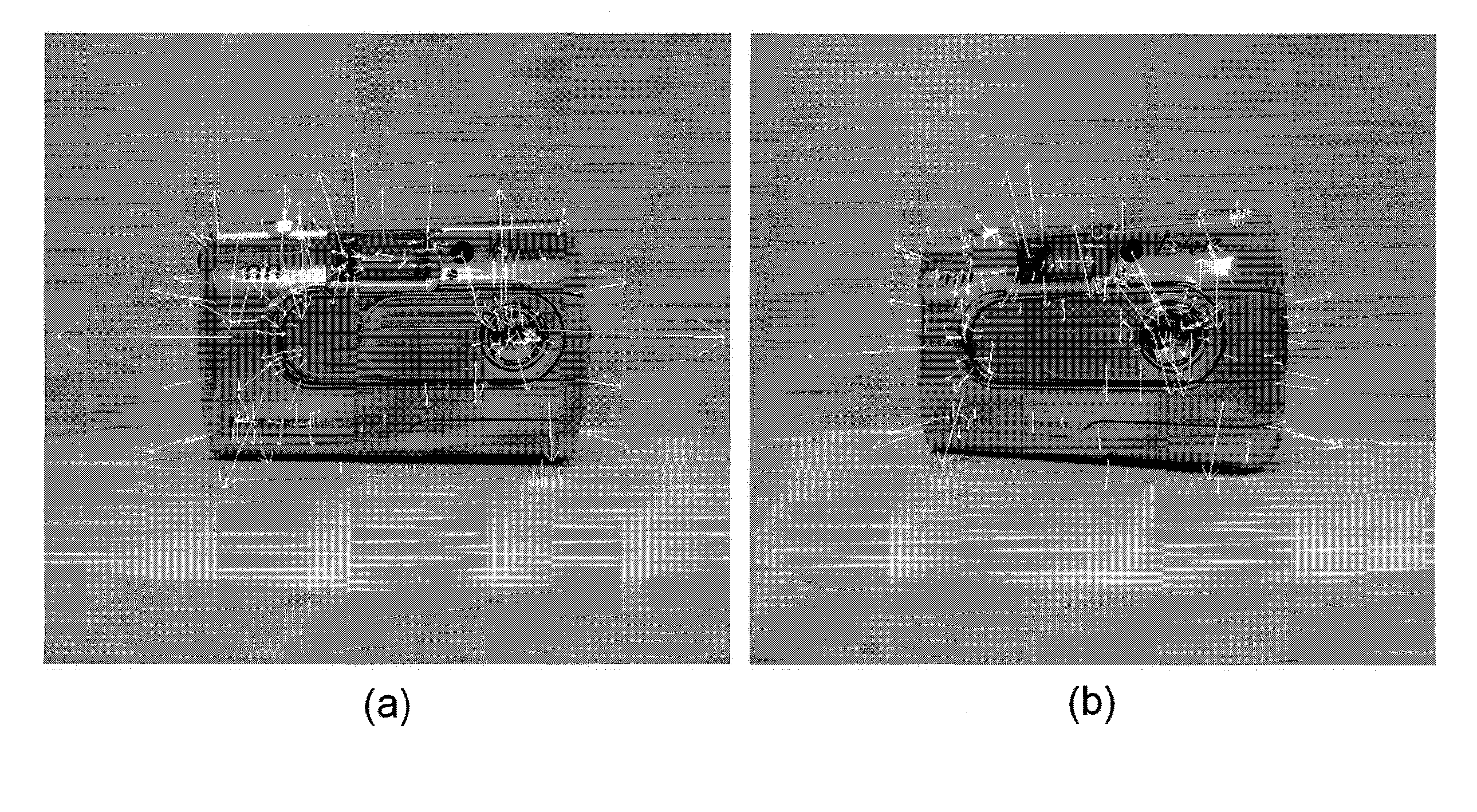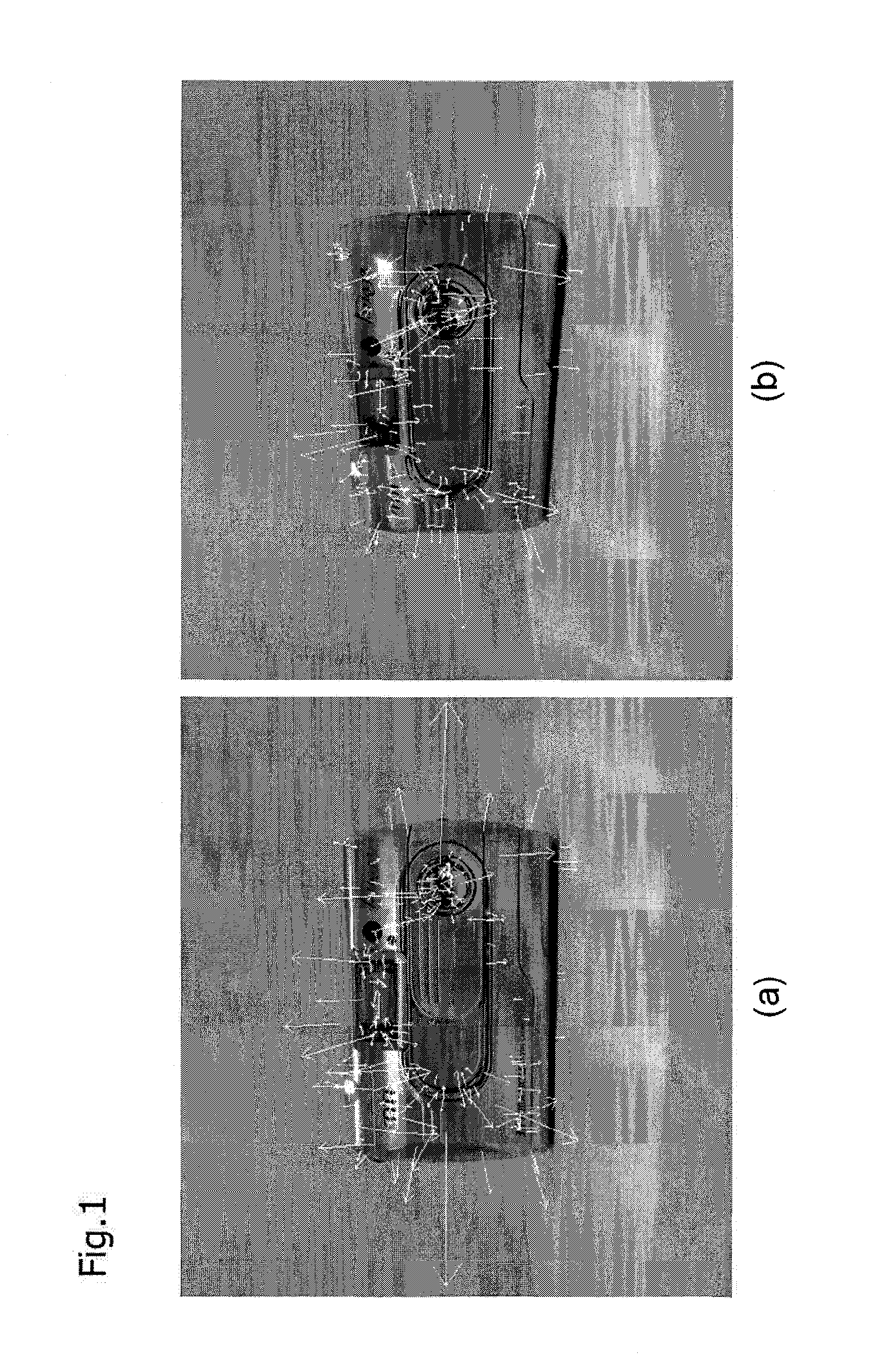Method and apparatus of compiling image database for three-dimensional object recognition
an image database and database technology, applied in the field of three-dimensional object recognition, can solve the problems of large memory needed and high probability of local feature noise, and achieve the effect of reducing the memory amount of the database and reducing the recognition ra
- Summary
- Abstract
- Description
- Claims
- Application Information
AI Technical Summary
Benefits of technology
Problems solved by technology
Method used
Image
Examples
experiment 2
[0157]2-4. Conclusion of Experiment 2
[0158]This embodiment describes the technique of increasing the processing time of the method of obtaining the subspace with the highest similarity in the subspace method. According to the present embodiment, the subspace having the highest similarity to the local feature is obtained based upon not only the projection component to each basis of each subspace, but also a magnitude relationship of the distance with a fixed point on a basis of each subspace. Since the subspace is obtained based upon the magnitude relationship of the distance, the approximate nearest neighbor searching method can be executed by using the ANN, whereby the increase in the processing time can be realized.
[0159]Consequently, the processing time could be 0.012 second, while keeping the equivalent recognition rate by using the ANN, although the processing time was 190 seconds and the recognition rate was 34% by the conventional subspace method. The proposed method is also ...
PUM
 Login to View More
Login to View More Abstract
Description
Claims
Application Information
 Login to View More
Login to View More - R&D
- Intellectual Property
- Life Sciences
- Materials
- Tech Scout
- Unparalleled Data Quality
- Higher Quality Content
- 60% Fewer Hallucinations
Browse by: Latest US Patents, China's latest patents, Technical Efficacy Thesaurus, Application Domain, Technology Topic, Popular Technical Reports.
© 2025 PatSnap. All rights reserved.Legal|Privacy policy|Modern Slavery Act Transparency Statement|Sitemap|About US| Contact US: help@patsnap.com



